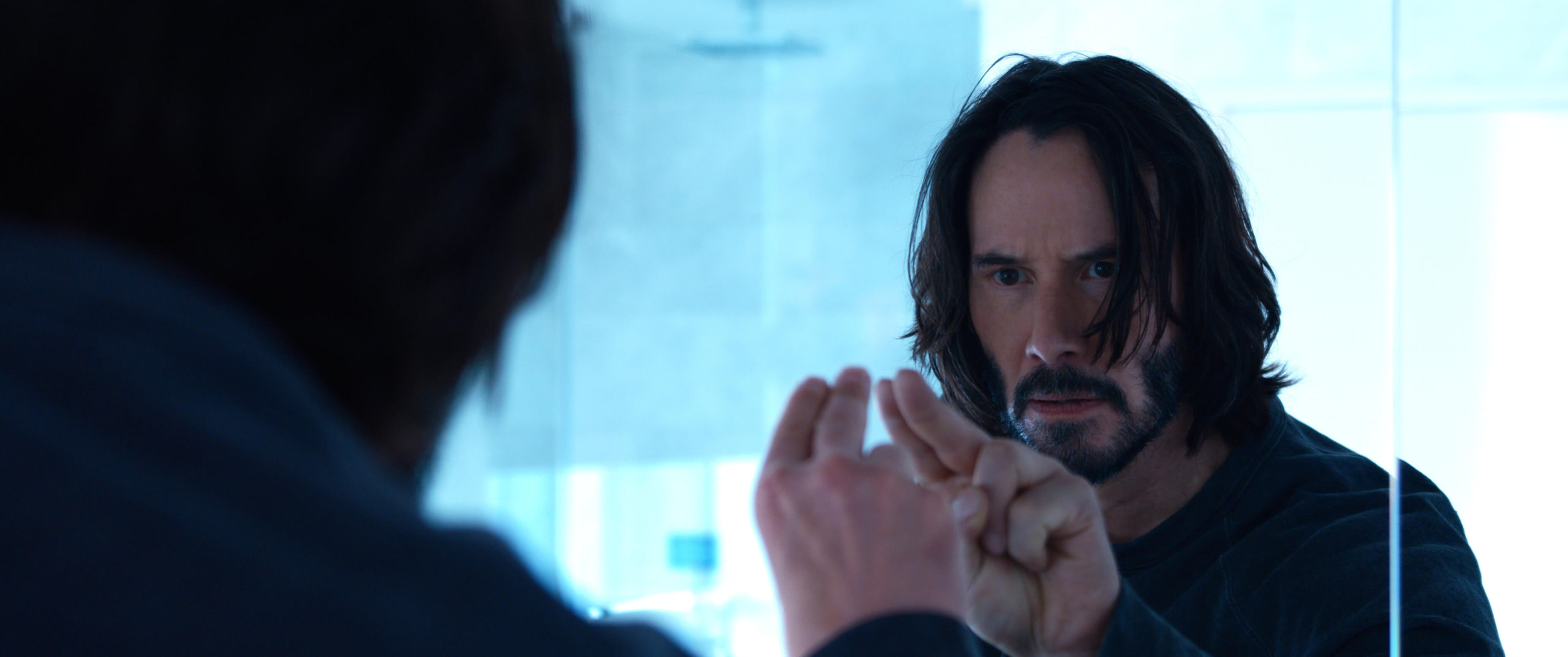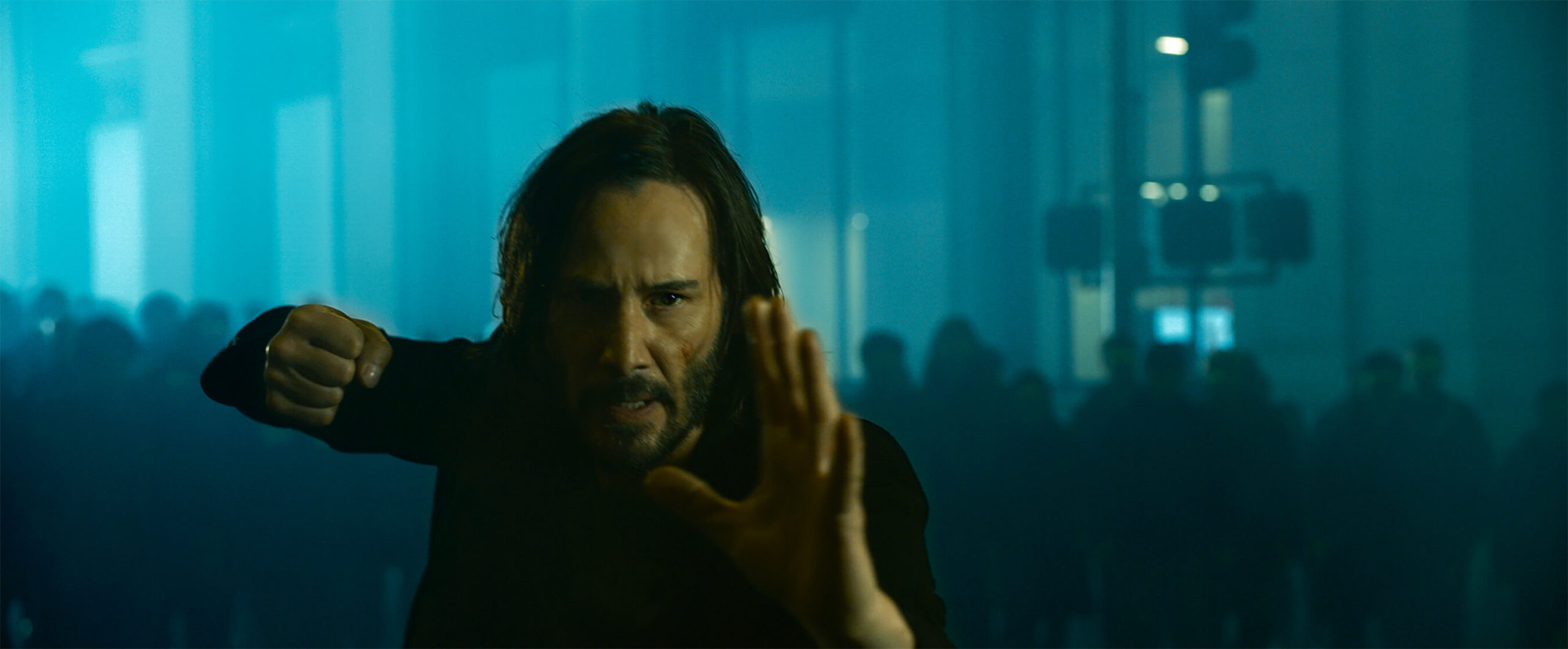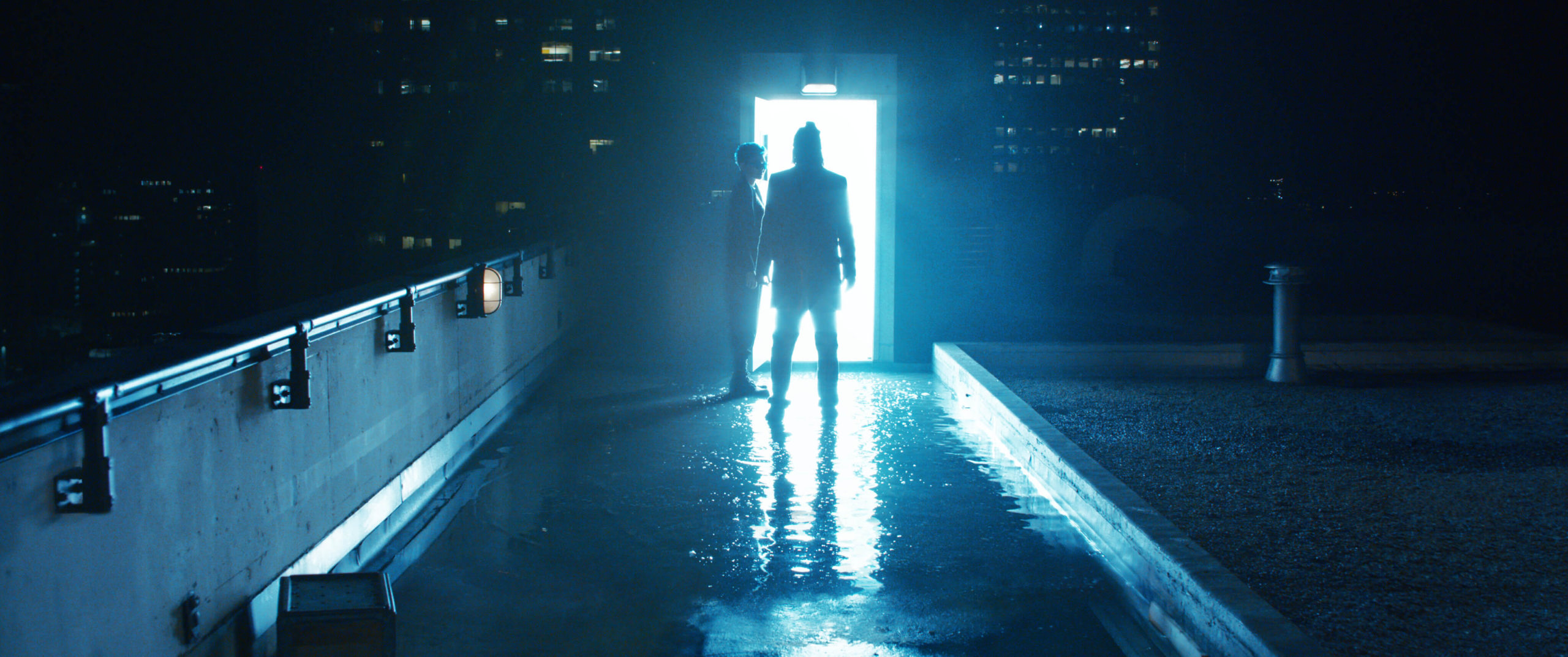In spring 1999, the world stared down a new century. It prepped for a Y2K computer meltdown, grappled with millennial paranoia, witnessed widening class and wealth gaps, and wrestled with culture rapidly moving online. Into this din came the Wachowskis’ The Matrix, its sexy leather-clad cyberpunk heroes kung-fu fighting and bullet dodging the Men in Black avatars of an evil empire in a quest to awaken humanity to their enslavement by machines in an invisible pen called the Matrix. It blew our minds — it’s still blowing our minds — fundamentally altering science fiction and action cinema and providing a vocabulary for our burgeoning digital experience: jack in, unplug, rabbit holes, take the red pill.
The Matrix became a trilogy, which seemed to end pretty definitively with The Matrix Revolutions (2003): Neo (Keanu Reeves) and Trinity (Carrie Ann Moss) were dead, and after watching it many viewers wished they were too. The series, which also includes The Matrix Reloaded (2003), was never short on ideas, in fact they balloon with each entry, but the ability to do anything with them seemed to decrease in direct proportion. So many story threads. So many hackneyed resolutions. (A group of killer machines coming together to form, Voltron style, something called Deus Ex Machina? Seriously?) And all the philosophical double talk. By the time the credits rolled on Revolutions, we all seemed cool with leaving The Matrix behind.
And why not? Look at the world since the first film rocked multiplexes. We’re inundated by Big Tech corporate messaging about entering the metaverse. We’ve willingly ceded all manner of decision making to AI-powered devices. If you believe Elon Musk, there’s a 99.99 percent chance we’re living in a computer simulation. And let’s not forget the authoritarianism, genocide, and general civilizational breakdown fomented by social media. We might not be living in pods of pink goo, but we’re just as complacently jacked into machines that seem the dominant force on humanity rather than the inverse. The Matrix’s dystopia — a future Earth dominated by machines who have turned humans into comatose batteries by enslaving them in an elaborate sim of late-20th century civilization — seems quaint in comparison to our real-world digital nightmare.
After all that, how does someone reenter The Matrix? Why even try?
For a studio like Warner Brothers, it’s all about the intellectual property. And in December it released The Matrix Resurrections, the fourth film in a series no one seemed to want resurrected, including co-creator Lilly Wachowski. Her sister, Lana, was more amenable. When the studio said it was making another Matrix with or without her, she got on board and wrote and directed a film that’s as thrilling and bizarre as it is unexpected. Because, as it happens, Silicon Valley has created new, fertile ground for The Matrix universe to expand and confront the Orwellian, dystopia-normalizing platforms, businesses, and technologies predicting, modeling, and altering our behaviors.
In terms of plot: Thomas Anderson/Neo is very much alive, now a rockstar designer who made his fortune designing The Matrix trilogy of video games. He feels off, like the world isn’t what it seems. He has nightmares and flashes of memories from another life, but everyone around him — his co-workers, his boss (Jonathan Groff), his analyst (Neil Patrick Harris) — assure him he’s just working through his trauma as a suicide survivor and he needs to take more of his blue pills. He goes along with it until an app he’s running glitches. This modal, a recreation of the Matrix we see in the first film, is hacked by Bugs (Jessica Henwick), a resistance captain in the real world, who extracts a program from the modal who’s on the same quest she is: to find Neo and undermine the Matrix, which has been recreated since Revolutions. (We learn in Reloaded that events take place in the sixth iteration of the Matrix, so this new one is at least the seventh.) Things go sideways when the freed modal program — its version of Morpheus (Yahya Abdul-Mateen II) — tries to red-pill Anderson. Anderson’s boss turns out to be a reborn Agent Smith, Trinity has been recast as motorcycle enthusiast mother of two Tiffany who has no memories of any previous life, and Anderson’s analyst is the Matrix’s new architect. Once Anderson is resurrected as Neo, the mission is to extract Trinity, too, and disrupt Matrix 7.0.
Of course it’s all convoluted, it’s a Matrix movie. But it’s also kind of a red herring. The plot is a vehicle for assailing the perversion of the digital promise.
The original film was released in the waning days of Web 1.0, when the internet was still a bit DIY and scrappy (think GeoCities websites and UseNet groups). It died when the dot-com bubble burst, replaced by Web 2.0, which was all about sharing and connectivity — but really commerce and consumption. Corporations and advertisers reconstituted online life around free blogs, free social networks, free search engines, and cheap stuff to mine our data and get fabulously wealthy. While we weren’t looking, the internet was bulldozed and consolidated into fiefdoms; its ragged democracy replaced by plutocratic surveillance capitalism; passions flattened into content. And now that returns on investing in 2.0 are plateauing, the oligarchs are pushing us into the metaverse. (A Matrix by any other name…)
Reckoning with these shifts is the backbone of Resurrections. This is evident in how the world of the Matrix has evolved, such as characters navigating in, around, and out of the Matrix using doors, mirrors, and other portals — the way we engage hyperlinks and tabs to get around today’s internet — rather than old phones and dial-up modems. It’s also all over the dialogue. The Matrix “weaponizes every idea, every dream, everything that matters to us,” Bugs says. “If we don’t know what’s real, we can’t resist.” (Facebook, that you?) Or, “It’s so easy to forget how much noise the Matrix pumps into your head until you unplug,” General Niobe (Jada Pinkett Smith) says. (Hi, Twitter!) Or “What validates and makes your fictions real? Feelings,” the analyst tells Neo at one point. “Ever wonder why you have nightmares? It’s actually us, maximizing your output.” He’s talking about energy to feed the machines, but it could just as easily apply to data feeding Jeff Bezos’ wealth. (For good measure, the analyst talks a lot about “the suits” and making money, which, to paraphrase Captain Kirk, what does a robot need with a bank account?)
If this can seem blunt and obvious, it is. The Matrix was never subtle. What’s daring, though, is Wachowski’s approach to the material, couching it all in a hyper-meta conversation with the previous Matrix films. Besides Neo’s flashbacks, actual moments and dialogue are recreated from the first Matrix — the opening Trinity chase, bullets raining down from a helicopter, even a cover of Rage Against the Machine’s “Wake Up,” which closed out the original film, playing at the end of this one. Making this truly bonkers is that Wachowski takes meta-aim at Resurrections, too. During a conversation in his office, Anderson’s boss tells him they’re going to make another Matrix game, that the suits at Warner Brothers are going to do it with or without them so they might as well get on board. “Back to where it all started — back to The Matrix!” It’s ridiculous and bananas and absolutely perfect.
It also reveals Wachowski’s complete disregard for what fans want in this kind of film. In this way it’s indebted to the other great recent sci-fi psych out, Blade Runner 2049 (2017), in which director Denis Villeneuve expanded and evolved the world of Replicants and Blade Runners and thoroughly went its own way. But 2049 is conventional next to Resurrections. When we see the first echoes of the original Matrix, it elicits a knowing chuckle — until things go sideways. It takes about a minute, and by then you’re either in or out. How you respond will likely come down to how much market-tested nostalgia you want. That’s comfort food, a blue pill; Resurrections is a challenge, a red pill.
The Matrix was never hard sci-fi. There’s none of the time-travel causality of The Terminator, for instance. Instead, unplugged humans fight machines on philosophical as much as physical battlegrounds in the present for control of the future. Still, The Matrix Resurrections defies expectations. Hardly the mind-blowing experience of the original, it’s something different, better, quieter even: a mature work of science fiction that smuggles its call for rebellion against corporate domination of our attentions, minds, and ideas into shoot-em-up set pieces and waves of nostalgia. That it does so in as corporate a piece of filmmaking imaginable — the IP reboot — makes it all brilliantly transgressive.
And where the first Matrix had a revolutionary’s fervor for toppling the system, Resurrections takes a more complex, measured view. The Matrix is perennial, and anyway some people don’t want to be freed from the “comfort of certainty” the analyst provides. But Neo and Trinity’s message — and Wachowski’s — is that we can’t allow dystopia to be recast as the best we can hope for. We’re meant for more than simply becoming batteries or data mines to be harvested by machines and billionaires’ algorithms.
In their final meeting with the analyst, Trinity tells him she and Neo are going to “remind people what a free mind can do.” “I forgot. It’s easy to forget,” Neo says. “He makes it easy,” Trinity replies, about their antagonist. “That he does,” Neo adds. “Something he should think about,” Trinity concludes. It’s a warning to all the analysts mucking around with our lives — and an invitation to us users to reclaim our agency, and imagination.











